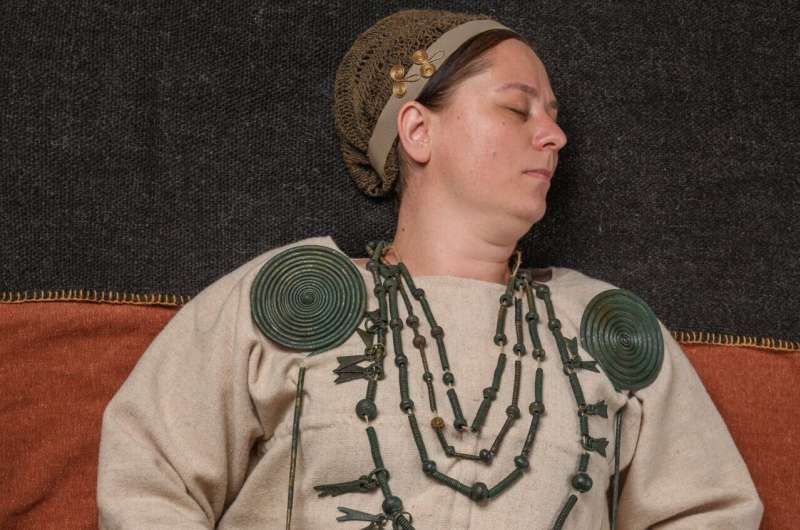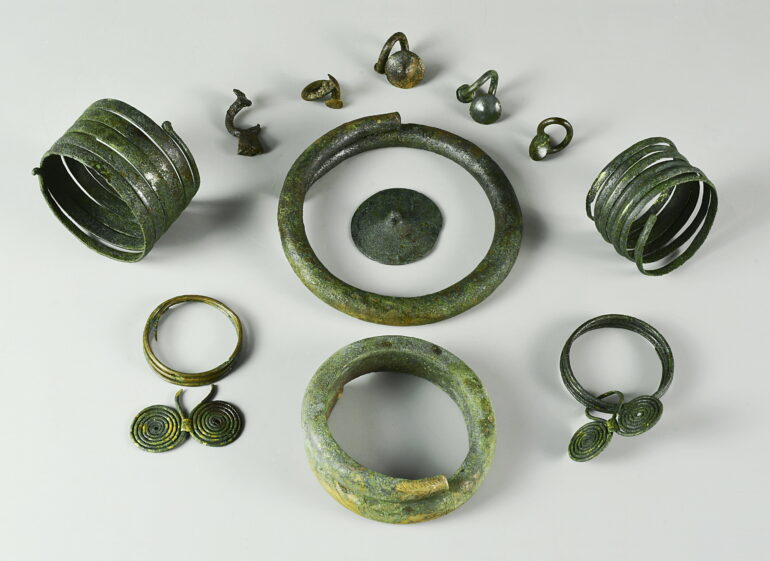Excavation at the dried-out lake site of Papowo Biskupie in north-central Poland has revealed more than 550 bronze artifacts, providing the most telling evidence of ritual deposition of metal by the occupants of the region from 1200–450 BC, known as the Chełmno group.
The Chełmno group was one of the northernmost communities of the Lusatian culture—an archaeological culture of Central Europe spanning the Late Bronze and the Early Iron Age.
The Lusatian culture, along with much of the Europe at this time, is known for the ritual deposition of metal hoards in bodies of water.
However, evidence of widespread hoard deposition by the Chełmno group has proven difficult to obtain. Unlike other Lusatian communities, they did not appear to have assigned much ritual significance to metal.
“Traditionally, the Chełmno group people are thought to have been largely unaffected by the social and economic developments of the Urnfield period and the subsequent Hallstatt culture,” state the authors. “In contrast with the widespread metal-hoarding seen in more southerly Lusatian regions, metal does not appear to have featured prominently in the social and ritual activities of the Chełmno community.”
This belief was called to question when metal detectorists discovered bronze objects in the Papowo Biskupie lakebed. Subsequent rescue excavation uncovered more than 550 bronze artifacts and the skeletal remains of at least 33 individuals. The initial analyses of these findings are published in the journal Antiquity.
The majority of the metalwork discovered is arm and neck jewelry. Researchers reconstructed a possible outfit worn by a woman of the Chełmno group based on the findings, pictured below.

Hypothetical reconstruction of a female outfit based on metal dress fittings and jewelry deposited at Papowo Biskupie. © A. Fisz
Radiocarbon dating suggests that the placement of human remains in the lake occurred before the deposition of the metal, portraying the possibility that the Chełmno community initially buried their dead in lakes before transitioning to metal votive depositions.
These findings highlight a potential link between the deposition of human remains and metal objects in lakes during the later prehistory of Central Europe. Further research at Papowo Biskupie will reveal more information.
Importantly, this association of human remains with the metal deposits suggests that, while the Chełmno group initially differed from the rest of the Lusatian culture in their ritual practices, their belief system later came into line with the rest of the region.
According to the authors, this one discovery has completely changed how the Chełmno group should be viewed, “rendering the site at Papowo Biskupie as one of the most eloquent testimonies of ritual activity from the Lusatian period in Poland.”
More information:
Jacek Gackowski et al, The Sacred Lake Project: preliminary findings from the Lusatian site of Papowo Biskupie, Poland, Antiquity (2024). DOI: 10.15184/aqy.2023.198
Citation:
Bronze jewelry sheds light on prehistoric ritual (2024, January 24)



